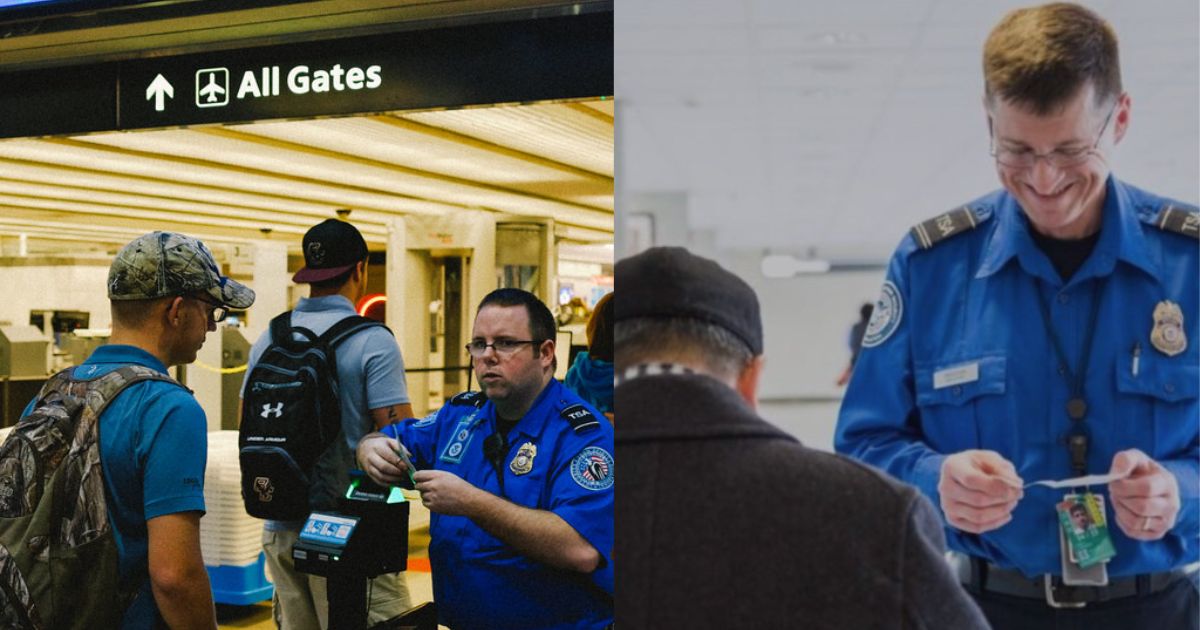If you’ve traveled by air in the last decade or so, chances are you’ve been stopped by a TSA officer, asked to hold out your hands, and watched as a cloth swab was rubbed across your palms. The officer then places the fabric into a nearby machine, waits for a green light, and either waves you through, or pulls you aside for more screening.
So, what exactly is going on during this strange ritual?
1. Stop Real Id
2. Get rid of TSA and go to a less invasive screening process
3. Quit using the no fly list in it’s present form (as a weapon)
4. Utilize local law enforcement at each airport and use them to contract for security (stop the illegal searches and seizures)— John Salisbury (@5Strat) April 27, 2025
It’s part of an enhanced security protocol introduced in 2010. After a failed terrorist bombing on a U.S.-bound flight the previous Christmas, the Transportation Security Administration began swabbing passengers’ hands to detect trace amounts of explosive materials. The method is still in use today.
The process works through what’s called explosive trace detection. TSA agents look for tiny chemical residues, substances like nitrates, nitroglycerin, and glycerin. That could suggest someone has recently handled or come into contact with explosives. The technology they use is precise, even when dealing with the smallest of samples.
The turning point for this change in security procedures was Christmas Day, 2009. That’s when Umar Farouk Abdulmutallab, a Nigerian man associated with al-Qaeda, attempted to detonate a bomb hidden in his underwear aboard Northwest Airlines Flight 253, flying from the Netherlands to Detroit.
The bomb failed to explode, causing only a small fire, and Abdulmutallab was later sentenced to life in prison.
In the aftermath, TSA ramped up its screening measures. Though they had already been swabbing carry-on items, they began swabbing passengers’ hands, too, a response rooted in the serious concern over aviation threats post-9/11.
As then-Homeland Security Secretary Janet Napolitano said in a 2010 CNN interview: “We know that al-Qaeda [and other] terrorists continue to think of aviation as a way to attack the United States.”
Despite these measures, the TSA’s performance hasn’t always been flawless. A 2015 undercover investigation by the Department of Homeland Security found TSA officers failed to detect 95% of smuggled weapons and fake explosives during security tests. The troubling statistic was a reminder for the need of multiple layers of screening.
The actual machines used for hand-swab testing are either handheld or desktop-sized. They work through a process known as ion mobility spectrometry, a technology that analyzes molecular structures.
TSA screeners at U.S. airports failed to detect weapons and explosives in almost every test https://t.co/4XhipOYAiG pic.twitter.com/jYUJOLDARQ
— The Daily Show (@TheDailyShow) April 16, 2016
Dr. Laura Parker, a chemist with the Department of Homeland Security’s Explosives Division, explained in a TSA interview, “That pretty much looks at the size and shape of molecules, compares it to a library of many chemicals, and then gives an outcome.”
These machines are calibrated to detect “chemicals of interest”, the types commonly used to create explosive devices. However, being flagged doesn’t necessarily mean someone is a threat. Substances like nitrates and glycerin are also found in everyday products like soaps, lotions, hair gels, fertilizers, and even fireworks.
A positive reading often leads to a simple pat-down or further inspection, not immediate arrest.
As long as you’re not hiding cow brains or tiger cubs in your carry-on (yes, those are real examples of past airport finds), you’re probably in the clear.













